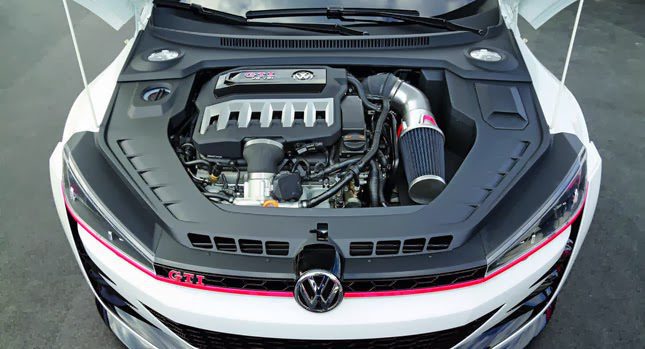Opel Corsa Engine: Top Tips for Upkeep and Treatment
Opel Corsa Engine: Top Tips for Upkeep and Treatment
Blog Article
Checking Out the Inner Workings of a Compact Vehicle's Engine System
As motorists, we often take for given the detailed processes that happen within the confines of our automobile's engine system. In this expedition of a small lorry's engine system, we will unwind the internal functions of this mechanical harmony, shedding light on the secrets that drive us onward on our daily trips.
Combustion Process Review
The combustion process in a portable vehicle's engine system is an important device that successfully transforms fuel into power to power the lorry. This process happens within the burning chamber of the engine, where gas and air mix, ignite, and create regulated surges. The burning process consists of four primary phases: consumption, compression, power, and exhaust.
During the intake phase, the piston relocates downward, attracting a combination of air and fuel right into the combustion chamber. The following stage, compression, entails the piston moving upwards, compressing the air-fuel mixture to boost its potency. Ultimately, in the power stage, the trigger plug fires up the pressed mixture, leading to a rapid growth of gases that forces the piston pull back. This downward motion generates the power needed to drive the lorry. In the exhaust phase, the scorched gases are removed from the burning chamber through the exhaust valve, preparing the chamber for the following cycle. This cyclic combustion process is basic to the operation of a small lorry's engine system, making sure reliable energy conversion for propulsion.
Piston and Cylinder Interaction

The piston's specific fit within the cyndrical tube is essential for maintaining optimal compression and avoiding energy loss during combustion. Tight clearances between the piston and cylinder walls guarantee efficient sealing, allowing the piston to move efficiently without permitting gases to leakage past. Correct lubrication is additionally crucial to minimize rubbing and use between these components, enhancing long life and efficiency.
Moreover, the style and materials used in manufacturing the piston and cyndrical tube influence engine effectiveness and longevity. Modern engines often employ light-weight yet sturdy products like aluminum alloys for pistons and cyndrical tube linings to decrease inertia and enhance thermal performance. On the whole, the harmonious interaction in between the piston and cylinder is fundamental to the engine's capability and general performance.
Gas Shot System Functionality
Gas injection systems in compact lorry engines play an important role in specifically providing gas to the combustion chamber for efficient and regulated ignition. The fuel shot system functions by infusing fuel right into the combustion chamber at the optimum moment throughout the engine's operation (opel corsa engine). This precise timing makes certain that the fuel blends uniformly with the air for correct combustion, leading to enhanced fuel performance and minimized emissions
There are largely two sorts of fuel shot systems made use of in small vehicle engines: port gas injection check my source (PFI) and direct gas injection (DFI) PFI systems infuse gas into the intake port prior to the intake valve, while DFI systems inject gas directly right into the burning chamber. Both systems have their benefits, with DFI using better gas atomization and PFI providing a much more cost-efficient service.
Recognizing Engine Cooling Systems
Efficient procedure of a small car's engine relies greatly on the performance of its cooling systems. The cooling system in a compact lorry commonly is composed of a number of components functioning together to regulate the engine temperature level. Comprehending these engine cooling devices is crucial for preserving the efficiency and durability of a small vehicle's engine system.

Exhaust System Components Explained
The optimal performance of a small vehicle's engine air conditioning systems depends on a corresponding system called the exhaust system, check these guys out which comprises numerous necessary elements for ensuring reliable discharges and engine performance. The exhaust system consists of components such as the exhaust manifold, catalytic converter, muffler, and tailpipe. The exhaust manifold accumulates exhaust gases from the engine's paths and cylinders them to the catalytic converter. The catalytic converter then converts unsafe contaminants in the exhaust right into less harmful emissions prior to releasing them via the muffler and tailpipe.
One important part of the exhaust system is the oxygen sensor, which keeps an eye on the oxygen degrees in the exhaust gases to help view it control gas consumption and guarantee optimum engine performance. opel corsa engine. Additionally, the resonator might be existing in some exhaust systems to reduce noise degrees. Overall, the exhaust system plays a crucial role in preserving engine effectiveness, lowering harmful exhausts, and guaranteeing a quieter driving experience for small automobile proprietors

Conclusion
In final thought, the portable automobile's engine system is an intricate combination of elements that collaborate to facilitate the combustion process, transform gas right into power, and expel waste gases. Comprehending the inner functions of the engine system, consisting of the piston and cyndrical tube communication, gas shot system, engine air conditioning devices, and exhaust system components, is essential for preserving ideal performance and effectiveness of the automobile.
The burning procedure in a portable vehicle's engine system is a crucial device that successfully transforms gas right into power to power the automobile.Gas injection systems in small car engines play a vital function in exactly providing fuel to the combustion chamber for controlled and efficient ignition.There are mainly two types of fuel injection systems used in compact lorry engines: port gas shot (PFI) and straight fuel injection (DFI) Understanding these engine air conditioning devices is crucial for maintaining the efficiency and long life of a small car's engine system.
The ideal functioning of a compact vehicle's engine cooling mechanisms depends on a corresponding system recognized as the exhaust system, which consists of different necessary elements for making sure efficient emissions and engine efficiency.
Report this page